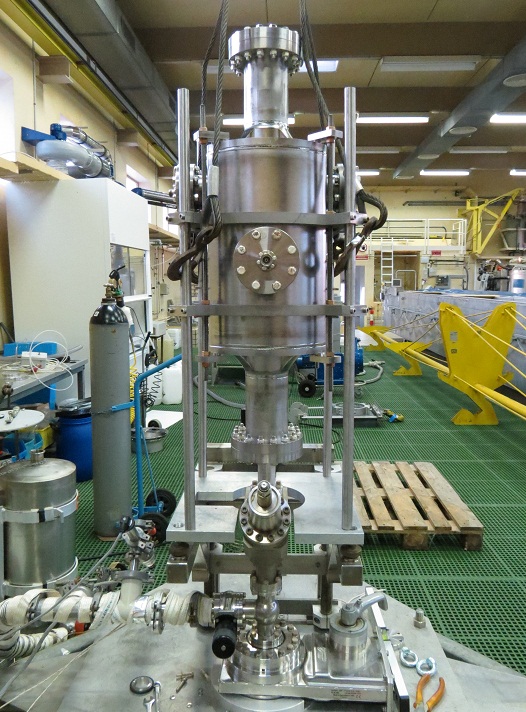![]() New developments in unconvetional RF structures
New developments in unconvetional RF structures


Fig 1: 4-rod crab cavity for HL-LHC. Image credit: ULANC.
Fig 2: 56 MHz quarter wave cavity. Image credit: BNL.
A lot of attention is paid to getting very high accelerating gradient RF structures, either for superconducting or normal conducting machines. Most of these structures use the TM010 accelerating mode in elliptical or pillbox type cavities, similar to those used in the LHC, however there are several other types of structures under development and not all of them are for acceleration.
Crab cavities are required to rotate bunches prior to collision and are being developed for LHC, ILC, CLIC and SPX. Quarter-wave cavities and capacitive loading of cavities have been tested by Lancaster University/CERN and ODU/Jlab. Another type of dipole RF structure is the RF undulator which uses RF fields to deliver short period undulators that can vary polarisation very quickly.
There are also developments in SRF monopole cavities. Niowave and ODU are developing spoke resonators for compact light sources, while BNL has developed a low frequency SRF gun based on a quarter-wave structure. Also for acceleration and for deflecting, several photonic bandgap (PBG) cavities are being developed, high gradient tested by SLAC and MIT, while LANL has been developing an SRF photonic cavity to extract HOMs. Additionally, a novel idea from Yale and Manchester University is to have a cavity that operates at two harmonics.
